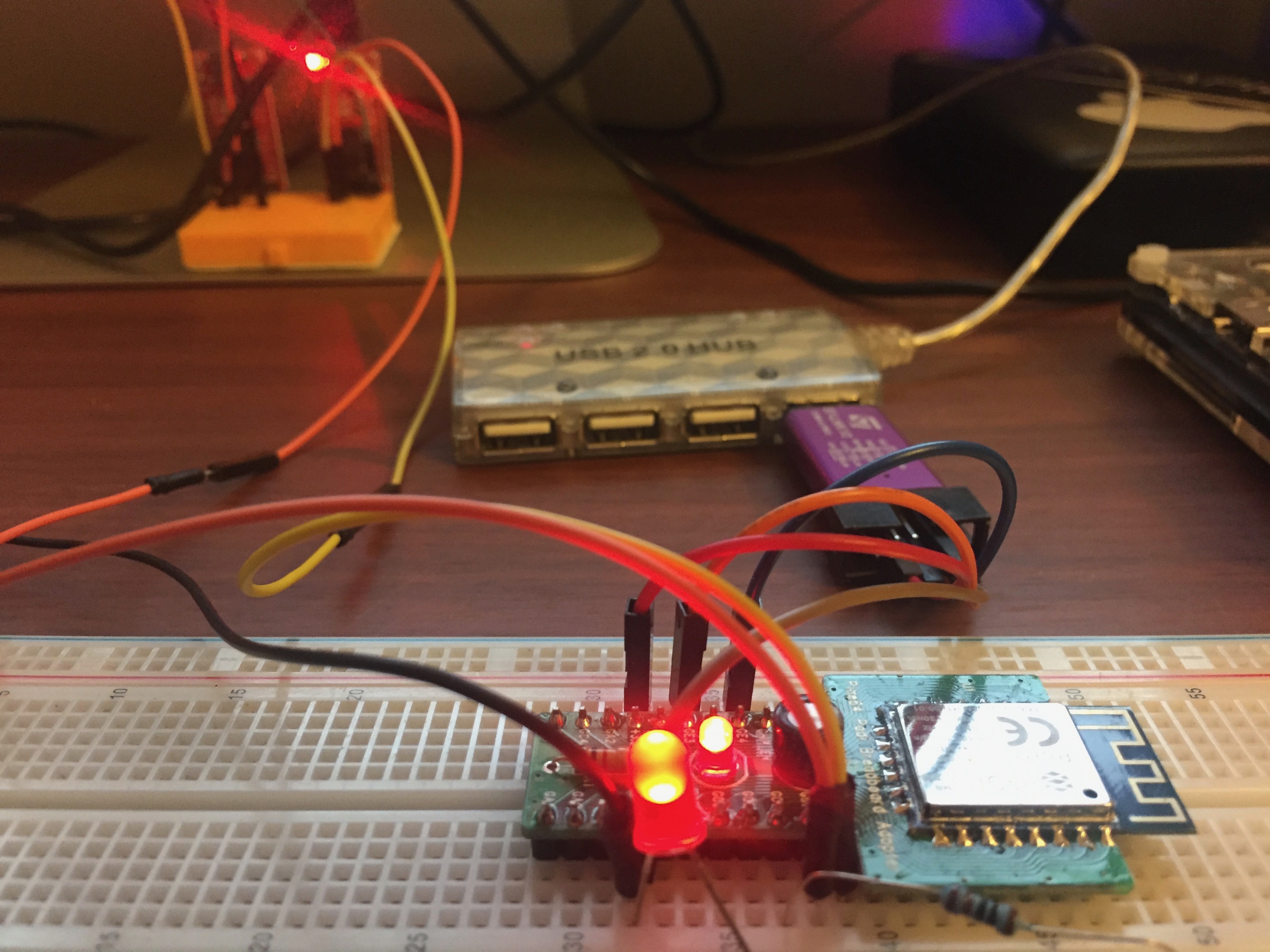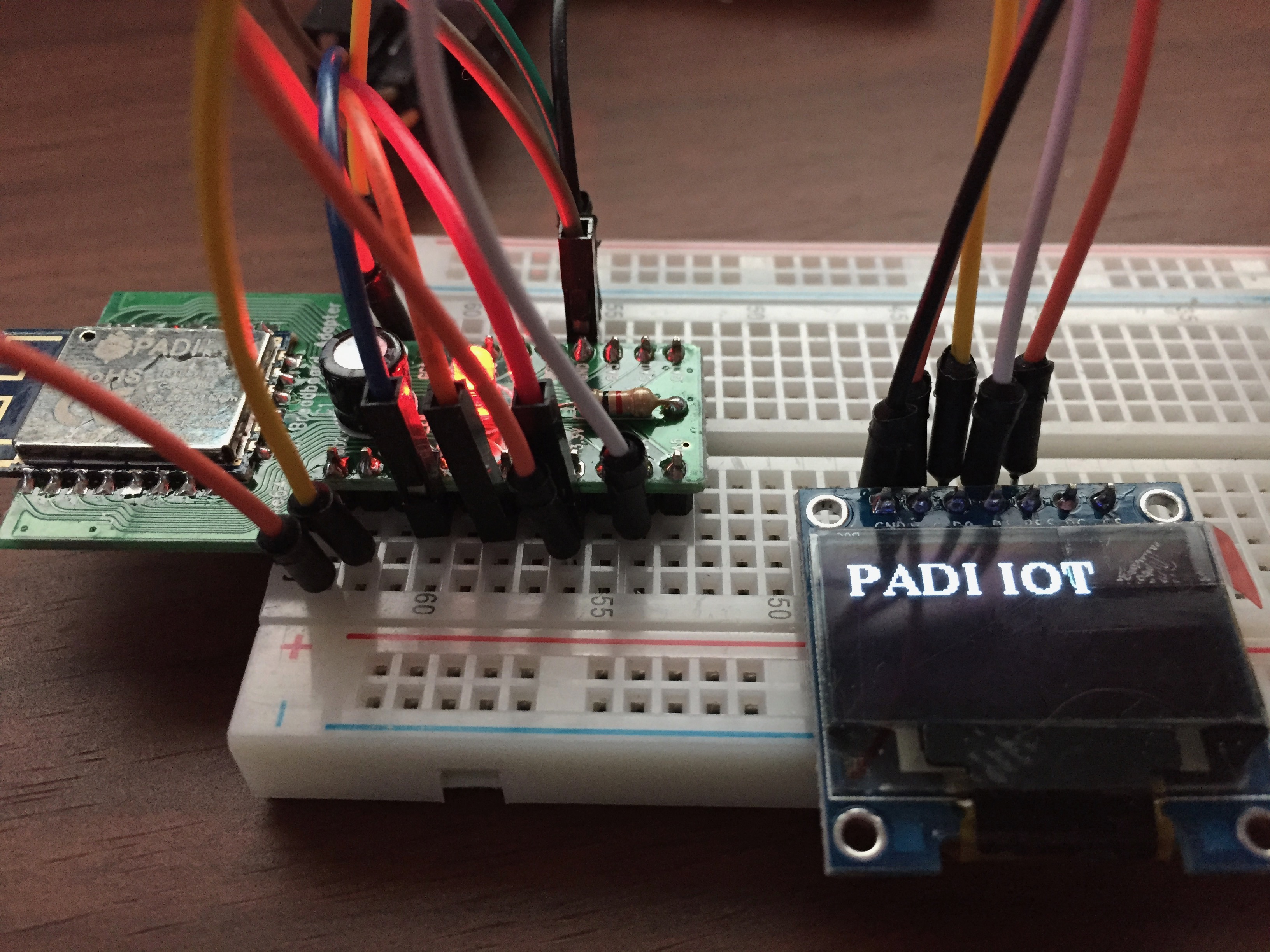Installation
This is an Arduino board package for the PADI IoT Stamp.
The package simply builds off of the Realtek Ameba Arduino package. Please install it beforehand.
Add:
https://github.com/gtalusan/PADIIoTStamp/raw/master/release/package_padiiotstamp_index.json
to your Arduino IDE and install the padiiotstamp package.
Install OpenOCD. The platform.txt assumes it lives in /usr/local/bin.
The platform.txt contains a menu to configure OpenOCD via the Arduino's Tools menu. If you don't see your OpenOCD compatible device in the drop down, you likely need to add a new menu item.
I accept patches.
NOTE: this has only been tested on macOS Sierra. Buyer beware.
Usage
Blink
The typical Blink sketch runs great. I have the LED wired to GC1.
// the setup function runs once when you press reset or power the board
void setup() {
// initialize digital pin LED_BUILTIN as an output.
pinMode(LED_BUILTIN, OUTPUT);
}
// the loop function runs over and over again forever
void loop() {
digitalWrite(LED_BUILTIN, HIGH); // turn the LED on (HIGH is the voltage level)
delay(1000); // wait for a second
digitalWrite(LED_BUILTIN, LOW); // turn the LED off by making the voltage LOW
delay(1000); // wait for a second
}
UART
UART pins are GB0 and GB1 at 38400 baud.
Wi-Fi
The Ameba IOT example ScanNetworks runs right out of the box:
ROM Version: 0.3
Build ToolChain Version: gcc version 4.8.3 (Realtek ASDK-4.8.3p1 Build 2003)
=========================================================
Check boot type form eFuse
SPI Initial
Image1 length: 0x3a88, Image Addr: 0x10000bc8
Image1 Validate OK, Going jump to Image1
BOOT from Flash:YES
SPI calibration
Find the avaiable window
===== Enter Image 1 ====elay start:0; Delay end:63
SPI calibration
Find the avaiable window
Baud:1; auto_length:11; Delay start:0; Delay end:63
load NEW fw 0
Flash Image2:Addr 0xb000, Len 220532, Load to SRAM 0x10006000
No Image3
Img2 Sign: RTKWin, InfaStart @ 0x10006049
===== Enter Image 2 ====
interface 0 is initialized
interface 1 is initialized
Initializing WIFI ...
WIFI initialized
MAC: 0:E0:4C:87:0:0
Scanning available networks...
** Scan Networks **
number of available networks:13
0) BELL902 Signal: -71 dBm EncryptionRaw: WPA2 AES Encryption: WPA2
1) BELL881 Signal: -83 dBm EncryptionRaw: WEP Encryption: WEP
2) doghouse Signal: -85 dBm EncryptionRaw: WPA2 AES Encryption: WPA2
3) hogwarts Signal: -89 dBm EncryptionRaw: WPA2 AES Encryption: WPA2
4) Rogers10444 Signal: -89 dBm EncryptionRaw: WPA/WPA2 AES Encryption: WPA2
5) BELL700 Signal: -89 dBm EncryptionRaw: WPA2 AES Encryption: WPA2
6) 869952 Signal: -91 dBm EncryptionRaw: WPA/WPA2 AES Encryption: WPA2
7) dlink-01D5 Signal: -91 dBm EncryptionRaw: WPA/WPA2 AES Encryption: WPA2
8) That Girl T Signal: -93 dBm EncryptionRaw: WPA2 AES Encryption: WPA2
9) JROY2016 Signal: -95 dBm EncryptionRaw: WPA/WPA2 AES Encryption: WPA2
10) OnyxLion-guest Signal: -95 dBm EncryptionRaw: Open Encryption: None
11) Venture Headquarters Signal: -95 dBm EncryptionRaw: WPA/WPA2 AES Encryption: WPA2
12) BELL842 Signal: -95 dBm EncryptionRaw: WPA2 AES Encryption: WPA2
I2C
Works OK!
#include <U8g2lib.h>
U8G2_SSD1306_128X64_NONAME_1_HW_I2C u8g2(U8G2_R0, 11);
void setup(void)
{
u8g2.begin();
}
void loop(void)
{
u8g2.firstPage();
do {
u8g2.setFont(u8g2_font_ncenB14_tr);
u8g2.drawStr(0,20,"PADI IOT");
} while (u8g2.nextPage());
delay(1000);
}

